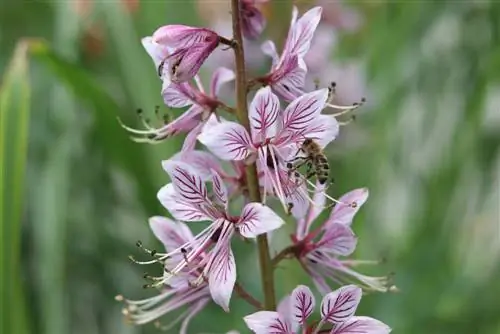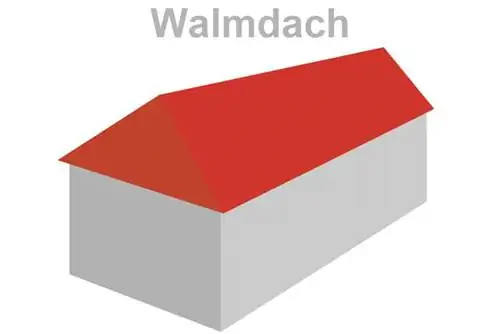- Author admin [email protected].
- Public 2023-12-17 03:39.
- Last modified 2025-01-24 12:45.
Diptam, which is also called “Burning Bush” and botanically Dictamnus albus, is only very rarely found in the wild in our latitudes. That's why it is planted again and again by gardeners and plant lovers in order to give this plant species a home in Central Europe. The cultivation is also carried out because diptame is not only beautiful to look at, but because the plant also contains essential oils that are used in Chinese medicine, among other things. Despite all this, the plant must be handled very carefully, because no matter how beneficial the essential oils may be, the plant itself is quite dangerous due to its bristles. The strong bristles can cause injuries such as burns when touched. In addition, the bark of the root of this plant was used as a drug in earlier times.
Note: The name “Burning Bush” does not just come from the fact that the plant can cause burn-like injuries when touched. Dittany can also self-ignite and therefore burn. This mainly happens on very hot days. The essential oils it contains are to blame.
Care
Diptam is one of the most beautiful plants that our native wild plants have to offer. Proper care is essential so that it can develop its full potential. You should meet these basic requirements:
- a sunny location
- a water-permeable and simple plant substrate that contains as much lime as possible
- only pour a little water through
- only a little fertilization and then only with simple compost
- When cutting back, start low on the stem and not immediately after flowering
- don't start pruning until the second year
In the best case scenario, give the Dictamnus albus time to grow. Give it its preferred sunny spot, water only a little and don't place too much emphasis on nutrient-rich soil. Diptam is so undemanding that a little lime in the soil is completely sufficient. Fertilize the plant no more than once per year. And ideally this should be done in spring before it sprouts again.
If you want to prune the plant, please make sure that you do this in the second year at the earliest. Then please only do so in spring and before the first new shoots appear. When the new shoots start to grow, keep a close eye on them. Snails love this plant and like to nibble on the new shoots. Also, don't try to move the plant over and over again. She doesn't like this at all. Tip: When caring for it, be careful not to get too close to the plant! The pain that this could cause is very unpleasant. Therefore, always wear gloves and protect your arms too. The same applies to small children. They should also be told early on that Dipty may look very nice, but it can also hurt terribly.
Propagation
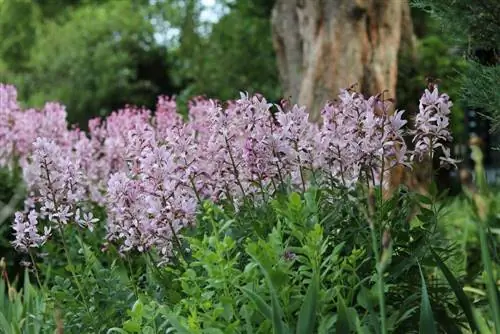
If you would like to grow Dictamnus albus in your garden, you have two options. On the one hand, you can work with the seeds of the plant. If you would like to sow seeds yourself, then be prepared for a slightly longer journey. However, if you decide to buy Dittany as a plant, things will go a little quicker.
If you want to sow yourself, you first have to stratify the seed that you took from another plant. This works best in the refrigerator. Place the seed together with some damp sand in a plastic bag, close it and put everything in a quiet place at room temperature (around 20 degrees) for about four weeks. Always make sure the sand stays moist. After four weeks, the seeds, sand and bag are moved into the cold refrigerator. It should be stored there for four to a maximum of six weeks. Then take the seeds out of the bag and put them in pots.
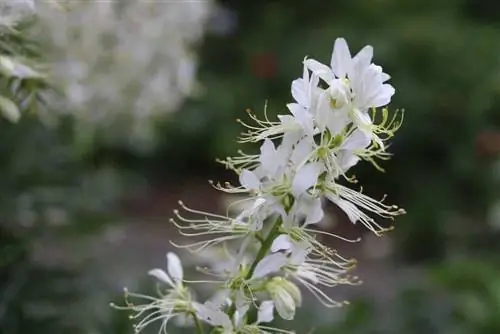
Do not work with conventional soil. First you have to put a small layer of gravel in the pot, which serves as drainage, then add some potting soil, then a layer of sand, then the seeds and finally sand again to cover the seeds. Place everything in a cool place (8 to 12 °C) and water regularly. The germination time is now around 180 days.
Tip:
If you want to prevent the seeds from being washed out of the sand when watering, then add another thin layer of gravel to the sand. However, if you choose plants that you can plant in the garden after purchasing them, then everything will go a little faster. Germination is no longer necessary and you can enjoy the splendor of the flowers.
Patience is everything
As with propagation, the dittany is not necessarily the fastest when it comes to growing. So be patient with the small plants. It takes around five to six years for the first flowers to form. However, it is a very undemanding plant that requires little care.
Tip:
Some gardeners try to propagate the diptam by division. This should happen in the spring. However, it can happen that he then gives in because he is not a fan of changing positions. Only attempt division if you didn't get any plants and you don't want to work with seeds.
Frequently asked questions
Which parts of the plant are poisonous?
The lower parts of the stems are poisonous; their “bristles” can cause burn-like injuries when touched. Therefore, always ensure that your skin is well protected when you come near the dittany.
Where are the essential oils?
The essential oils are found in the flowers. However, you should not process these yourself. It's better to enjoy the beautiful smell when the flowers are still on the plant. If an overdose occurs, increased sensitivity to light can occur.
Why is the plant burning?
The essential oils cause the fires. If the temperatures are very high, the vapors from the oils can ignite. However, the entire plant is not on fire, only small flames can be seen on the flowers.
What you should know about Diptam in brief
Profile
- The name 'burning bush' comes from the fact that the plant can ignite itself.
- It produces so much essential oil that it ignites on its own on extremely hot days.
- The burning glass effect ensures the formation of droplets.
- You can see the inflammation at dusk, when there is no wind and when it is very hot. Small bluish flames can be seen.
- Diptam is one of the most beautiful, but also rarest and protected native wild plants. It is slightly poisonous in all parts.
Care
- A sunny location is ideal.
- The planting substrate should be rather barren, water-permeable, calcareous and dry.
- We only water moderately.
- Fertilize only a little, preferably with a little compost. Once a year.
- Do not cut back after flowering. The fruit clusters are also very beautiful.
- It's best to let it grow. The plant is sensitive to disturbances.
- Only cut back in early spring before budding!
- When budding begins, pay attention to snails, they like the young shoots.
- For snails, diptam is a delicacy that they cannot resist.
- The plant doesn't like to be moved.
Propagation
- Propagate by division at the beginning of spring.
- The plant is a group-forming perennial that reaches large sizes fairly quickly.
cultivation
- Growing the plant is a tedious process.
- Home-grown plants often grow significantly better than purchased ones.
- Diptam is a cold germinator. The seed does not germinate quickly for long - so sow soon after the seed has ripened!
- If you sow later, germination will take significantly longer.
- The sowing soil should roughly correspond to the soil in which the plant will be placed (does not like any changes).
- You can sow in pots, but also directly in beds. Does not need to be covered.
- Besides cold, it is also a light germinator. Cover the seeds only slightly with soil.
- If you place the seeds where the plant will later grow, you don't have to transplant them.
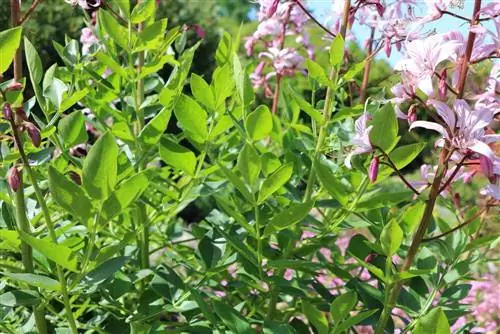
Conclusion
Diptam is a beautiful perennial plant with great flowers. In a few years it reaches an impressive size. Up to 40 flower stalks grow from such a large plant. A calcareous soil is important, otherwise it will not be as splendid as possible. You should also not plant the plant on the bridle to avoid injury if someone uninformed touches it. Otherwise, Diptam is a grateful plant that doesn't require much care and is happy if you leave it alone.

